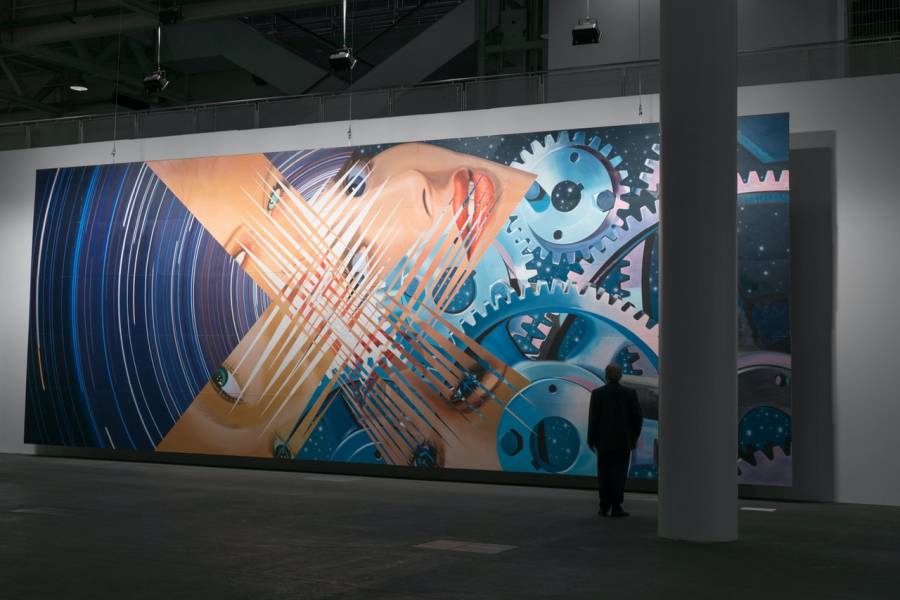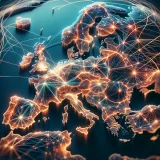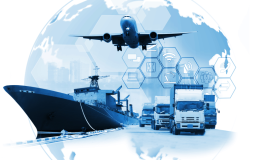With the start of every new decade, one can’t help but wonder what the world will look like at the end of it. If we can skip the major COVID year (can we) what will 2030 be like? Human technological advancement used to take generations if not centuries up until the Renaissance era. Even then, it took several hundred years for the Industrial Revolution to start shaping the world as a precursor to how we know it today.
When assembly lines emerged, better commercial goods could be manufactured faster and more efficiently. This is arguably where modern capitalism really began to take hold.
Since then we have had several more Industrial Revolutions, such as the use of robotics, automation, computers, and the internet. Each of these technologies has not just revolutionized industrial manufacturing but has incrementally affected our way of life.
It is no accident that complex consumer products like automobiles, home electronics, and gadgets continue to not only get cheaper but also safer. And with the Digital Age, the incremental impact technology has had on everyday life has increased in both frequency and effect.
How IoT May Transform the World By 2030?
IoT technology, despite the security challenges that accompany it, promises to be the next great catalytic force. The concept of IoT has evolved far beyond the drawing board and is already seeing widespread application across a range of industries as well as everyday activities. From farming to manufacturing to local law and order, there seems to be no shortage of IoT possibilities.
The concept of a “smart home” is no longer a far-fetched idea, but well within the realm of possibility given advancements in voice-controlled virtual assistants and IoT networks. This blog will try to paint a picture of what life in 2030 could look like while attempting to remain grounded on the present-day trajectories the technology is taking. Read on to find out more about specific aspects of everyday life we can expect to change by the end of this decade, including:
1. Smarter Homes and Offices
2. Smarter and More Efficient Cities
3. Improved Manufacturing on an Industrial Scale
4. Safer, Smarter, and Better Automobiles
Let’s examine what the future could look like based on the direction IoT tech is taking at the time of this blog. However, before we begin, there is one important disclaimer. Please note that these are not predictions or guaranteed changes. They are at best cautious extrapolations but based as close to current tech as possible to avoid big leaps of faith. Let’s begin.
Smarter Homes and Offices
The more successful certain technology is, the more impactful it will be in the more obvious areas of your life. Take the internet itself. When it first emerged, it was almost a novelty. Most people didn’t think it would go on to transform the everyday consumer’s life the way it has.
But by 2020, we have seen massive investment in infrastructure as well as advancements in residential and commercial internet tech. This has put providers like Charter in a position to offer internet services to the vast majority of the US. Today, the internet pervades nearly every aspect of our lives, from work to entertainment to study to social interactions. In other words, the changes are apparent in two very obvious areas in our lives: at home and at the office.
IoT in The Workplace
The same principle can, in theory, apply to IoT. IoT devices are already appearing in homes and offices. Sensors already control things like security doors, attendance registers, fire alarms, sprinklers, and even heating and lighting in offices. Other devices like security cameras, motion detectors, and HVAC systems also depend on sensors in the current day.
How difficult could it really be to transition all the sensors and devices in an office building into a central network? At least from a layman’s perspective, it doesn’t seem like a big leap. Sounds too outlandishly futuristic for you? Cisco, a world leader in networking technology, already offers smart building solutions revolving around:
- Prioritizing building security.
- Offering better customer interactions.
- Supplementing occupant health and safety.
- Seamlessly improve building efficiency.
The smart office of 2030 will revolve around these principles. While we can’t speak for architectural design in 2030, we can certainly bank on office buildings or workplaces being safer, healthier, more efficient, and much more secure.
Efficient Smart Homes
The future smart home follows more or less the same principle. However, smart home IoT technology currently significant faces compatibility problems, mostly since different devices communicate in different languages determined by their manufacturer.
So while your Google Assistant may be able to control devices operating over Wi-Fi, it may not be able to do the same for devices that communicate in ZigBee, Bluetooth, or Z-Wave.
All of these languages being used for various devices makes the language barrier an obstacle in terms of how quickly smart homes can become the norm, instead of the exception. But given that much of this technology is very new, and currently does not have a definitive set of industry standards or regulations, this is to be expected.
As industries begin to capitalize on a market with no clear leaders, various governments will inevitably come up with regulations and standards. This, in turn, will usually improve device compatibility and integration in the average smart home. In any case, smart homes will follow similar principles as smart workplaces, including:
- Improved home security.
- Better in-home experience.
- Optimizing health and safety.
- Improved energy consumption and efficiency.
Smarter and More Efficient Cities
It is generally accepted (or even expected) that smart homes and smart workplaces will dominate the landscape by 2030. By that rationale, limiting the impact of IoT just to these two places seems a bit shortsighted. Urban areas such as large city centers and towns are usually densely populated.
That means they will most likely have a large number of offices and homes. If offices and homes can become smarter through IoT, the same concept can be applied on a more macro scale. In other words, IoT can usher in the age of the smart city.
IoT Applications in Cities
Consider any modern developed city in the US today. Local governments today have several responsibilities, including law and order, traffic regulation, waste management, energy supplies, pollution control, and much more. Many cities already use technology in strategic areas to help make these responsibilities more manageable.
Take traffic cameras for example. These can monitor traffic all over the city, and many can even identify traffic violations and issue fines autonomously.
Law enforcement can also use these cameras (along with others) to be more proactive in preventing criminal activities. Traffic management also becomes much easier, making life a bit simpler for citizens trying to commute to and from work.
Governments such as those in Hong Kong and China actually use advanced facial recognition tech in addition to sensors around cities to actively monitor citizens (although that seems a bit too Orwellian for most people’s tastes). Regardless, a smart city is not as far in the future as it was at the start of the last decade.
Smart Cities of the Future
But what will a smart city look like in 2030? Let’s take three present-day examples of local governments using IoT as a baseline. Barcelona uses IoT tech to improve parking availability. This helped by heavily reducing both fossil fuel emissions as well as traffic congestion.
Ultimately, traffic saw improved movement in busy parts of the city. Tel Aviv, Israel uses IoT to manage the use of its reserved fast lanes in busy areas. This helps with easing traffic jams and gridlocks for the entire city. It also earns the city revenue in terms of fines on violations.
San Diego, California was one of the first urban hubs to begin using IoT to reduce the city’s energy costs, namely by using smart-LED lampposts. These posts only light up when traffic or pedestrians are nearby, saving the city hundreds of thousands in public energy costs.
A smart city by the end of 2030 will probably incorporate all of these aspects. Almost certainly, they will add new ones too. In any case, we should expect smart cities by 2030 to at least offer:
- Dramatically reduced street crime rates.
- Smooth traffic flow with minimal blocks or congestion.
- Improved waste management capabilities at lowered costs.
- Significantly smaller energy consumption footprints.
- Improved city life in terms of healthcare and essential services.
- Sustainable living with smarter management of clean energy and water.
Obviously, the scale to which IoT spreads in a city will depend heavily on that city’s government. Remember, strong democracies empower local governments to deliver visible and long-lasting results in their constituencies. But the decision to adopt new technologies will ultimately depend on elected officials instead of bureaucrats.
Improved Manufacturing on an Industrial Scale
True revolutionary technologies don’t just change our everyday lives. They also have a significant transformational impact on existing processes that deliver everyday consumer goods. In other words, IoT won’t just result in an improved standard of living. It will also cause an improvement in the industrial processes that create consumer goods to improve our standard of living.
The manufacturing industry, in particular, stands to benefit the most from adopting IoT. The technology has promising applications for strategic use on the assembly line and other key processes. In fact, some of the biggest names in large-scale manufacturing have already started to board the IoT bandwagon. This is paving the way for others to follow suit.
IoT in Automotive Manufacturing
The parallel use of automation and robotics is not new to manufacturing, particularly in the automotive industry. When making complex products like the modern-day automobile, vehicle manufacturers rely on the synergy offered by machines and humans. Many automotive assembly lines are a hybrid of human workers as well as purpose-built automated machines.
All working towards a shared goal: a complete automobile rolling off the line. This speeds up the manufacturing/assembly process considerably. At the same time, it ensures consistently high quality (in keeping with stricter consumer protection laws). Now consider industries that have introduced IoT technology into the mix.
Harley-Davidson and IoT-Supported Processes
Harley-Davidson is an almost permanent part of American culture. It has done an excellent job of encapsulating the free-spiritedness and individualism of the country. All in a beautiful piece of machinery that is an icon of our culture. Up until recently, the company’s York-based motorcycle plant followed the same 1970s-style assembly operation it had for years.
But with a high-tech manufacturing systems update, courtesy of Cisco, the plant has transformed immensely. Using a network of sensors at specific points on the assembly line operation, Harley-Davidson has stepped up. It can now pinpoint and remove bottlenecks as soon as they arise.
The Cisco plant has even restructured certain operations to navigate around persistent obstacles and bottlenecks. The bottom line result? The plant can now roll out 1 model out of its 1,700 variations every 6 hours. The previous timeline was 21 days from the date of order.
Automobile Manufacturers of Tomorrow
What does this tell us about the future of industrial manufacturing by 2030? We can only extrapolate since nobody can speak for sure. But since most manufacturers are hell-bent on minimizing production costs, we can reasonably hope to see:
- Dramatic improvements in manufacturing processes and production capacities.
- Restructuring of assembly lines to create better products in less time.
- Easy identification and removal of manufacturing roadblocks and bottlenecks.
- Cheaper and better-quality products as a direct result of improved production processes.
Safer, Smarter, and Better Automobiles
The automobile is without doubt one of humankind’s greatest achievements. Henry Ford can safely be credited with developing the world’s first assembly line. This propelled automobiles from expensive novelty to a much cheaper and viable product. Over the years, the automobile industry has seen many entries and exits. Some of the early movers like Mercedes and BMW are still leading manufacturers today. Others like Lagonda and BRM couldn’t adapt to the increasing complexity and varying global demand.
Tesla offers several examples of electric vehicles that have proven to be commercially viable. It is also exactly the kind of technology needed to drive down road emissions to near-zero levels over the coming years. And that’s just one purpose for manufacturing these vehicles.
The Problem With Conventional Vehicles
Conventional automobiles run on fossil fuels. Who doesn’t love the roar of a V8 or V10 engine revving up to the redline! Generations have been captivated by the thrill and speed performance vehicles offer, as well as the exciting driving experience. But the environmental impact they have in terms of carbon emissions is a big problem. There is also the fact that road accidents are the single biggest cause of global fatalities as per the WHO. It is obvious that even many current automobiles are far from perfect.
Over the decades since Ford’s Model T, automobiles have continued to get safer and more fuel-efficient. But they haven’t been able to make transformational headway in terms of road safety and carbon emissions. That is, of course, until present-day electric vehicles arrived on the scene.
Electric vehicles had the reputation of being unreliable, short-ranged, and difficult to maintain. In other words, they were considered less viable than those powered by internal-combustion engines. However, as the fossil fuel crisis grew rapidly over recent years, manufacturers correctly anticipated the need to shift to sustainable alternatives.
Improved Road and Passenger Safety
Thanks to the vast range of sensors as well as computers with the ability to learn and adapt, things are changing quickly. We are seeing vehicles that should belong in science fiction books. From autopilot modes to automatic braking to obstacle radars, they have it all.
The modern vehicle isn’t just environment friendly, but much safer and more reliable. Modern sensors can accomplish a range of feats, from identifying when a driver is asleep to alerting occupants if the car is drifting off the lane to even detecting potential collisions before they occur. This is a direct impact of the use of IoT in modern vehicles, and it promises to only go upwards.
The E-Vehicles Of The Near Future
Automotive tech and IoT continue to advance at a fast pace. We wouldn’t be unreasonable to expect vehicles by the end of 2030 to have:
- True autonomous driving without requiring a human’s input.
- Improved vehicle capabilities with IoT transmitting performance data to manufacturers.
- Wireless performance and safety upgrades that can be “downloaded” to the vehicle.
- Sophisticated road safety systems that minimize the risks of collisions, injuries, and fatalities.
IoT continues to make its presence felt across our lives. We can reasonably hope for major changes in the coming years. The technology may well have a transformative effect similar to the internet or AI in everyday use.
Image Credit: mali maeder; pexels; thank you!


















